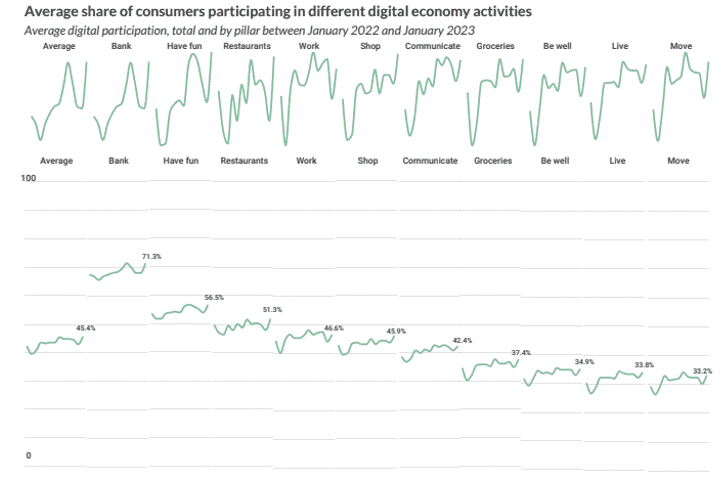Consumer engagement in the connected economy continues to gain ground, as new PYMNTS research found the use of apps and platforms posted double-digit increases in January.
According to a survey of over 2,700 U.S. consumers for “The ConnectedEconomy™ Monthly Report: Digitally Divided — Work, Health and the Income Gap, the 14% jump in travel- and transportation-related use led the way.
There were varying usage patterns across both the types of apps most used, and a widening gap in the income levels of those who use apps and websites to procure and pay for goods and services. With travel one of the few gainers in a troubled 2022, the increase of use of travel apps isn’t entirely unexpected.
“The most significant increase we’ve seen is in the share of consumers using digital to support their travel and commuting needs, using apps, aggregators and platforms to help them do everything from commuting to planning vacations,” the study stated. “On average, 14% more consumers reported using these types of digital tools in January 2023 than one year prior.”

Consumers also used more of these tools to plan and book vacations, as the data showed that “16% more consumers are checking travel information online, and the share purchasing airfare online is also up 16% year over year.”
Also seeing an increase is use of apps to find the best prices on gas, which remains elevated despite dropping from a national average of $5 a gallon in June.
“The use of apps to track and locate gas stations has increased the most,” the study found. “The share of consumers using gas station tracking apps is up 18% year over year — possibly reflecting an effort to find the cheapest gas prices [in the] area.”
Additionally, the use of social networking apps saw meaningful increases year over year.
“In total, 59% of U.S. adults posted on social media during January 2023, and 74% browsed on social media,” the study found. “These shares are up from last year, at 54% and 70%, respectively.”